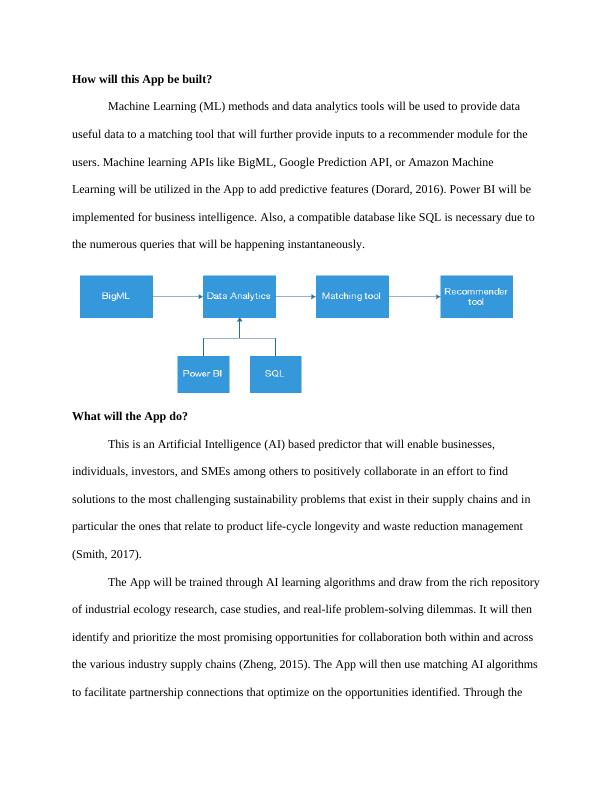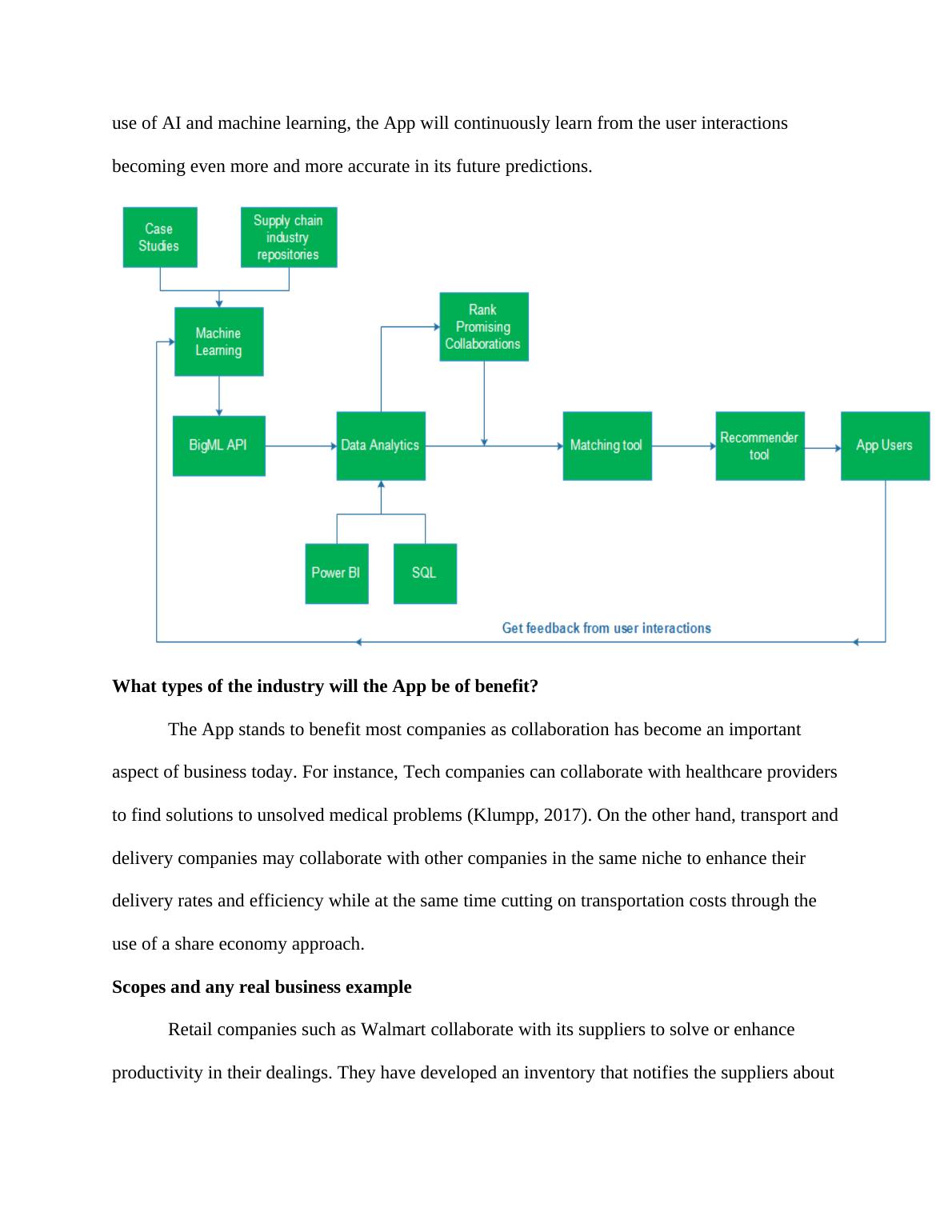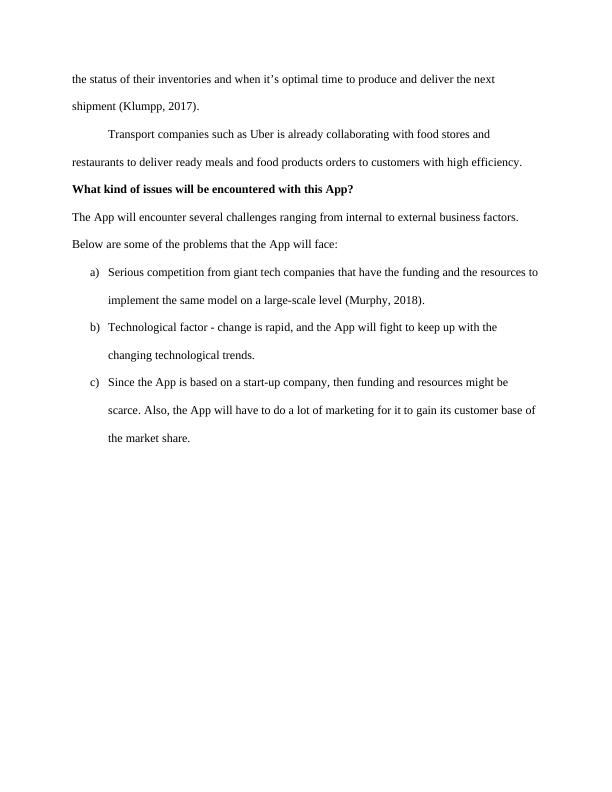How will this App be built? : Machine Learning
Give an overview of what supply chain is and how it works
8 Pages784 Words13 Views
Added on 2022-09-11
How will this App be built? : Machine Learning
Give an overview of what supply chain is and how it works
Added on 2022-09-11
ShareRelated Documents
End of preview
Want to access all the pages? Upload your documents or become a member.
Artificial Intelligence And Robotics Applications
|25
|1141
|37
Use of IS/IT for Innovation: Case Studies of Amazon, Netflix, Apple, and Mitsubishi
|18
|3996
|295
Introduction to Azure ML Studio | Essay
|20
|2458
|19
Student Replies for Module - Recent Trends in Business Analytics
|4
|1334
|9
Machine Learning and Predictive Analytics
|19
|4253
|14
(ICT101) Assessment 3 : Introduction to Information Technology
|6
|1842
|214



